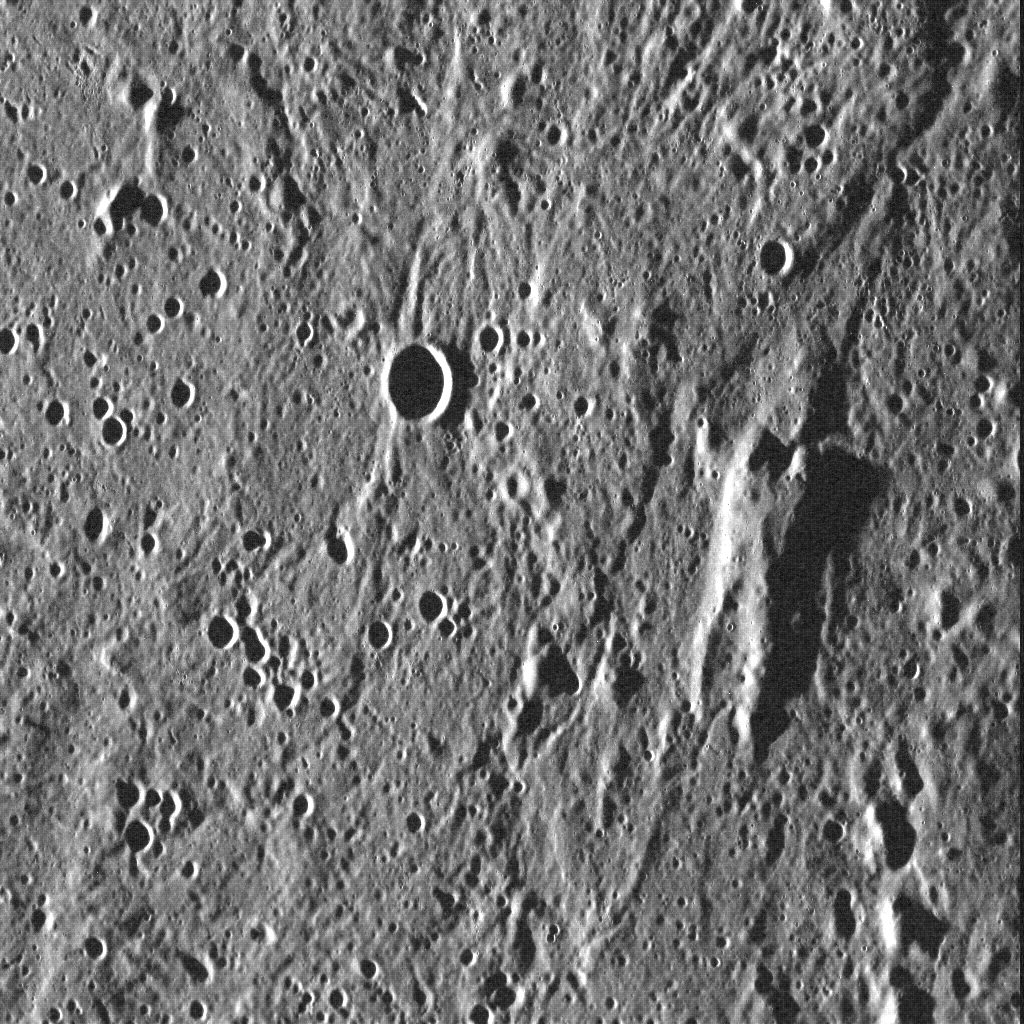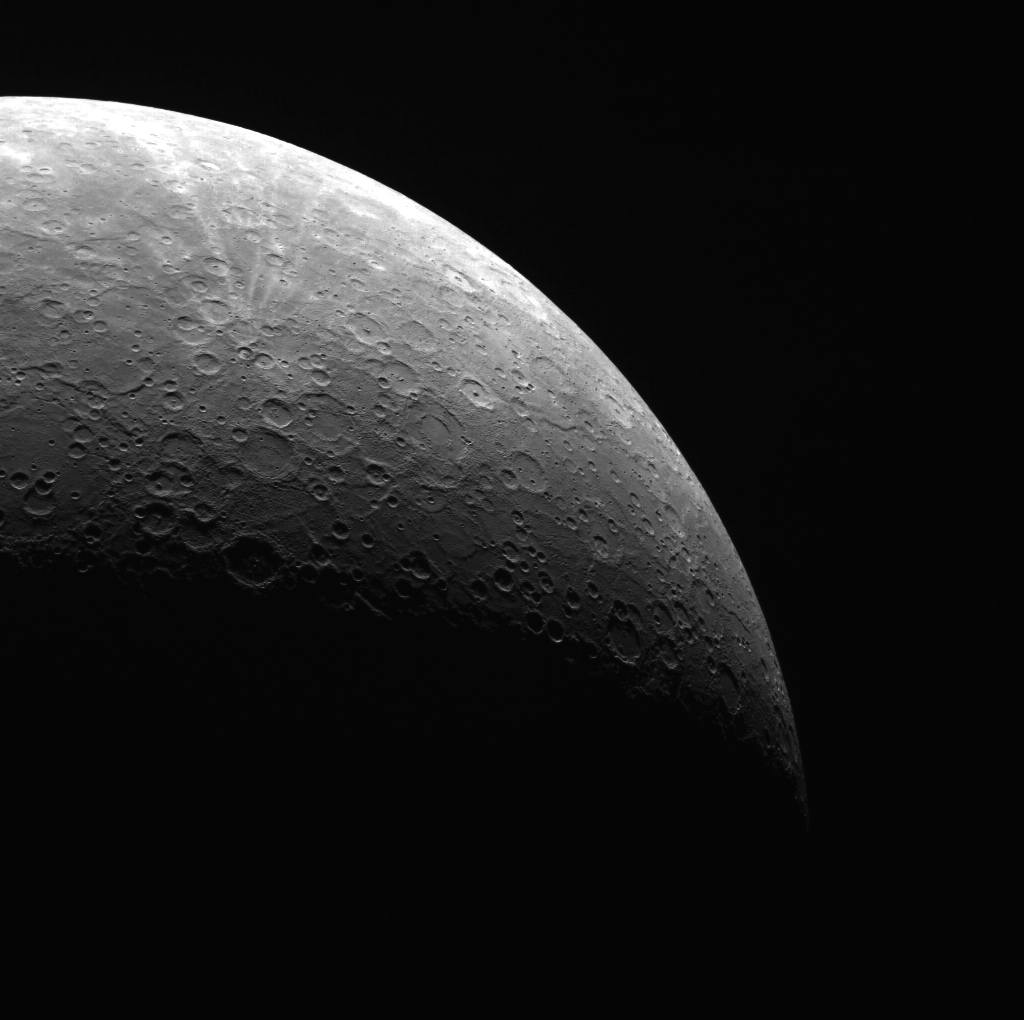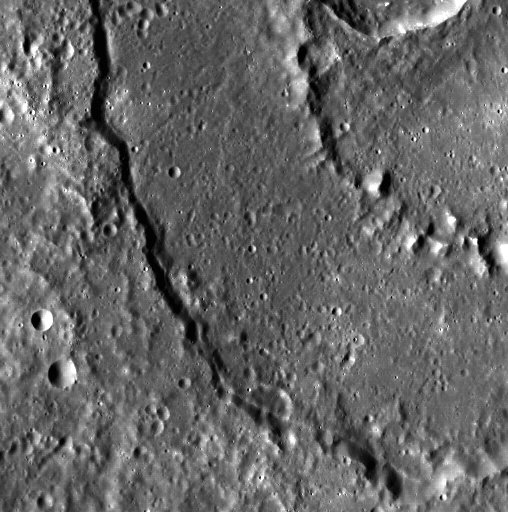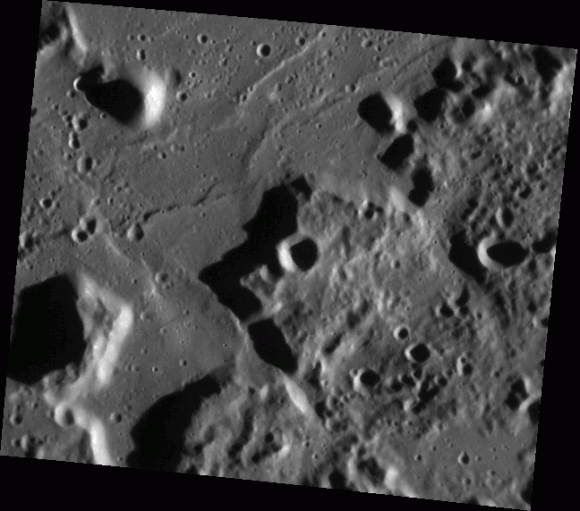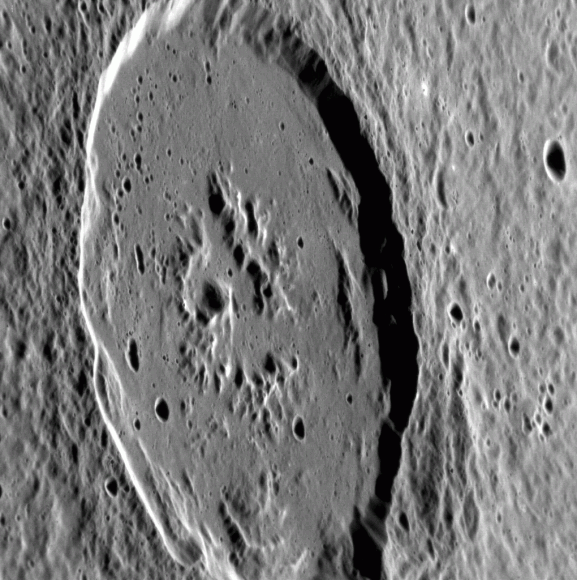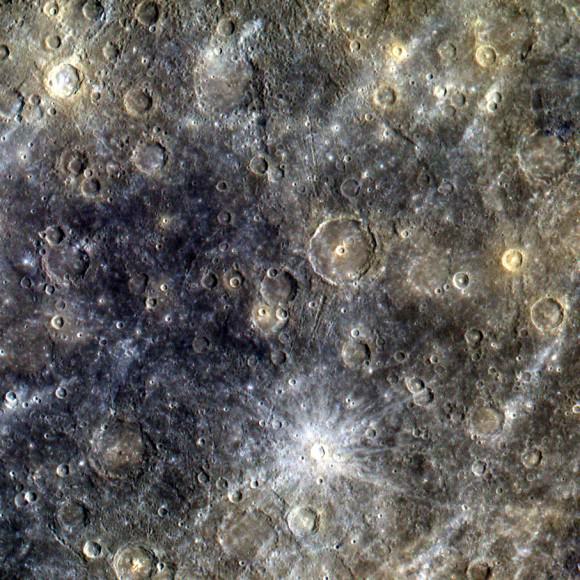You’ve all heard of the “face on Mars” and the “man in the Moon” — well I guess this would be the “man on Mercury!” And I feel like I’ve seen him somewhere before…
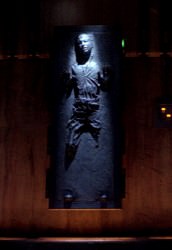
In yet another instance of the phenomenon known as pareidolia, it’s hard not to see the vaguely human shape in this image of Mercury’s surface, acquired by the MESSENGER spacecraft in July 2011. But what looks like a person with upraised arms (resembling, the team suggests, a certain carbonite-encased space smuggler) is really an ancient block of surface crust that juts from the floor of Mercury’s vast Caloris basin — likely the remnants of harder material predating the basin-forming impact 3.9 billion years ago. The low angle of sunlight from the west helps to highlight the surface shapes.
The image above shows an area 96 km (59.7 mi.) across.
If Jabba really wanted to keep his favorite wall decoration safe, perhaps he should have put it on Mercury…
Read more on the MESSENGER site here.
Credit: NASA/Johns Hopkins University Applied Physics Laboratory/Carnegie Institution of Washington

